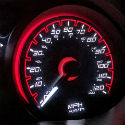
T-Mobile for years has touted network speed data from Ookla as showing that its network is the fastest in the US. But all that changed this week when Ookla's Q1 numbers came in showing AT&T made a huge jump in in the rankings to overtake T-Mobile for the No. 1 spot.
But T-Mobile isn't giving up that easily. The company claims that a bunch of AT&T customers see the new "5G E" logo on their phones, and so they're running network speed tests on Ookla's Speedtest app, and all of those tests are tipping the results in AT&T's favor.
"We think it's important to recognize that these results are skewed by AT&T's misleading 5G E marketing," wrote a T-Mobile spokesperson in an unsolicited email to Light Reading. "Naturally, seeing '5G E' on their phones, AT&T customers were curious and many ran speed tests, giving AT&T disproportionately more tests in LTE Advanced areas."
Continued the T-Mobile representative: "And while a win is a win, you have to wonder 'at what cost?'"
However, an Ookla representative said that AT&T was on track to be fastest in Q1 before the company decided to change its LTE icon on its phones to the 5G E icon.
For a while, AT&T will be able to cite data from Ookla as showing that AT&T offers the fastest wireless network -- the very same company that T-Mobile has cited for years in its own network advertisements.
It's important to take all of this with a grain of salt: After all, just last week OpenSignal -- which operates a similar network monitoring service -- reported that AT&T's 5G E network was slower or equal to similar offerings from T-Mobile and Verizon.
Of course, virtually every wireless network operator can point to data showing that it's the best, fastest or most reliable, whether the source is OpenSignal, J.D. Power or GWS. That's because some companies use crowdsourced customer network data, while others use data from drive tests, while others use data from customer surveys.
Finally, a mobile customer's actual network speed can be affected by a wide variety of changing factors. These include the number of other users on a particular cell site, the technologies in their phone and the network, their proximity to a cell tower, the topology of their area, whether they're inside or outside, the spectrum they're using, and so on.
— Mike Dano, Editorial Director, 5G & Mobile Strategies, Light Reading | @mikeddano
About the Author(s)
You May Also Like











